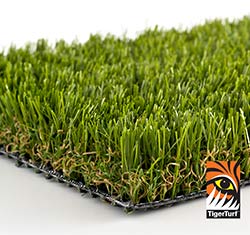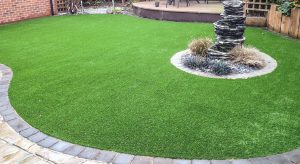Birimingham’s Installation Guide To Artificial Grass
Commercial Artificial grass in Birmingham is highly popular today, either as a low-maintenance option from Phoenix Lawns to a real yard or as the covering for sports pitches, children’s play areas or mini-golf courses. Once somewhat frowned upon as cheap-looking and tacky, this substance has evolved to the stage where, more frequently than not, it’s now realistic enough to pass for the actual thing.
That is, in no small part, because of the method of Production that goes into the typical modern commercial artificial grass roster. This guide will detail the six chief aspects to consider when assessing the quality of a normal turf carpet, and the way each of these contribute to give the material its realistic look and feel, in addition to its famed endurance and ease of maintenance.
 Pile Height denotes the highest height of these artificial blades on the carpet. Landscaping commercial synthetic grass, for example (the kind usually seen in rear gardens) tends to get blades between 1.5″ and 2″ in height, while in athletic turf this average rises to between 2.25″ and 3″.
Pile Height denotes the highest height of these artificial blades on the carpet. Landscaping commercial synthetic grass, for example (the kind usually seen in rear gardens) tends to get blades between 1.5″ and 2″ in height, while in athletic turf this average rises to between 2.25″ and 3″.
Face Weight denotes the amount of yarn used per square yard in a roster of commercial artificial grass. The yarn is used, the thicker the carpeting is going to be, and the softer it will feel underfoot. Once more, however, face weight is only one factor determining turf softness; pile height and yarn type should also be taken into account. For more of detailed artificial grass type please visit https://phoenixlawns.co.uk/products/
Backing Weight, as its name suggests, describes the density of the primary and secondary layers of financing. Main backing is the material by the synthetic grass blades are punched, and usually consists of two layers; secondary backing denotes the coating applied to the blades to improve their durability and fortify their binding, which in the case of commercial synthetic grass is typically done with polyurethane. The weight of both of these components put together gives backing weight, which for a normal roll of commercial artificial grass will often be approximately 26 to 28 ounces.
Then again, buyers may want to go to get a sturdier carpet instead of a thinner one, since it’s very likely to last longer and suffer less wear and tear.
Together with weight and Commercial synthetic grass rolls tend to be either 15″ or 12.5″ wide, and as the first may result in a simpler setup, the latter is preferred for thinner areas. Purchasing the ideal width can often spell the difference between a successful, fast, waste-free installation job and a great deal of unnecessarily-spent cash, so clients are advised to discuss this aspect with the merchant before buy.
 The final aspect to consider when buying a roster of commercial artificial grass doesn’t have anything to do with dimensions; rather, it includes the sort of yarn used in the making of this carpet. Commercial synthetic grass is usually made from one of 3 different types of yarn: nylon, polypropylene or polyethylene. The latter is famous for being the most versatile and balanced, which makes it the material of choice in most modern turf rugs, while the former is the most porous, which makes it unsuitable for pet grass, for instance. Polypropylene is mostly utilised in putting greens, and both nylon and it also commonly see use as thatch layers in landscaping turf.
The final aspect to consider when buying a roster of commercial artificial grass doesn’t have anything to do with dimensions; rather, it includes the sort of yarn used in the making of this carpet. Commercial synthetic grass is usually made from one of 3 different types of yarn: nylon, polypropylene or polyethylene. The latter is famous for being the most versatile and balanced, which makes it the material of choice in most modern turf rugs, while the former is the most porous, which makes it unsuitable for pet grass, for instance. Polypropylene is mostly utilised in putting greens, and both nylon and it also commonly see use as thatch layers in landscaping turf.
It Is the combination of those elements which determines the overall quality of a roster of commercial artificial carpet; potential buyers should, therefore, be careful to evaluate and enquire about all them when planning a purchase.
On the lookout for high quality commercial synthetic grass? Turf specialists Phoenix Lawns offer non invasive turf at exceptionally attractive rates. Visit our website to find out what we offer!